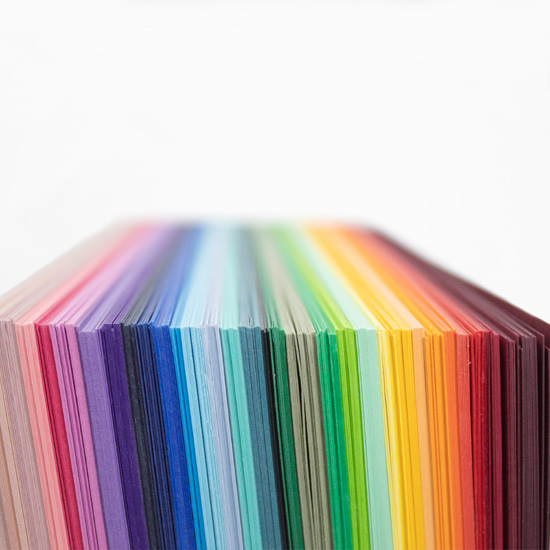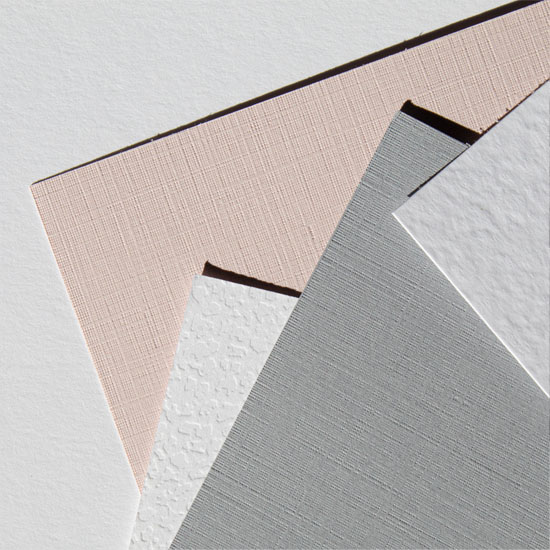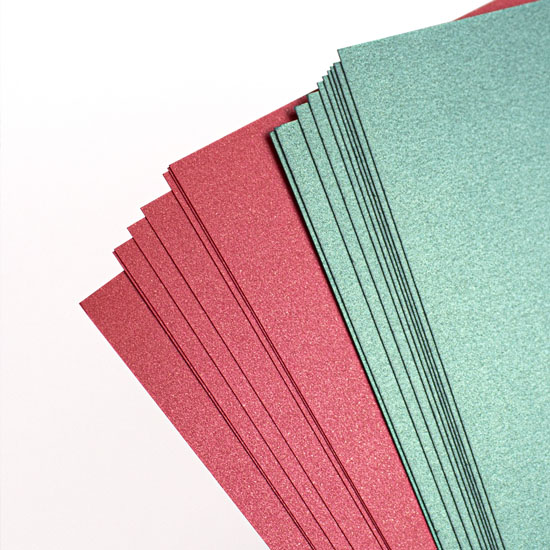What Paper or Card Thickness (GSM) Should You Choose?
Posted by Beth on 13th Jan 2021
When choosing paper or cardstock, most people will go straight to colour and finish — after all, these are the first things they see. However, it’s just as important to consider paper weight, which is a big part of the look and feel of your wedding invitations, greeting cards, and other crafting projects. The right weight can create your desired first impression, whether you’re making DIY wedding invites, professional business cards, or greeting cards for your company’s customers.
But what exactly is paper weight? If you’ve ever ordered business cards, bespoke invitations or some type of printed paper product, you may have come across the acronym “GSM.” In this guide, we take a closer look at paper and card thickness and how it’s measured using the GSM standard.
What Does GSM Mean?

In the paper and pulp industry, card weight isn’t measured by thickness but by grammage — the area density of a paper product or its mass per unit of area. In parts of the world that use the metric system, the mass per unit area of any paper product is expressed in grams per square meter (g/m2), or the weight of one sheet of 1-metre x 1-metre card.
Grammage is more commonly referred to by its unofficial abbreviation: GSM. While grammage is technically the proper term for paper weight, most printers in English-speaking countries refer to GSM as the “weight” of a card.
What GSM Does NOT Mean?

It’s important to note that GSM refers to the weight of a card and not its thickness.
While GSM does have a relationship with paper thickness (for example, a 300gsm sheet of card is very likely to be thicker than a 100gsm sheet), it is not a reliable measurement for paper and shouldn’t be used as such.
One of the main factors that affect card thickness is the material used to make it. If we were to compare two sheets of paper from different materials, both could be 300gsm but one could be thicker than the other due to the difference in composition. In fact, one card could be thinner yet still have more heft than a thicker card.
Our A4 white silk 350gsm card is a good example of this. The card contains clay and has been compressed and polished to create a silk finish. However, when compared to our A4 white matte 300gsm card, the latter is lighter but thicker due to it being more fibrous and less compressed. The GSM designations of both products also show this difference in weight.
However, it’s still common for consumers and people in the paper and printing industry to conflate GSM with card thickness. Much of this has to do with how we tend to associate the paper weight with thickness.
Importance of Choosing the Right GSM
Paper products in different GSM classes are better suited for certain applications. For instance, paper with a lighter weight is generally designed for printing and writing. In contrast, heavier and thicker paper is ideal for specialised applications, such as invitations, greeting cards, and scrapbooking.
Consider these two examples:
- Business cards usually come in the heaviest card available. As they’re designed to be passed around between contacts, business associates and customers, business cards need to be thicker and durable, explaining why they’re made from high-GSM durable card.
- On the other hand, flyers promoting a sale or event are usually disposable, hence why they’re made from the lightest, flimsiest low-GSM paper.
If you’re planning to order our cardstock, it helps to know what GSM classes are available to you. Below is a chart to give you a rough idea of the feel of our card products in each GSM range.
| 35gsm - 55gsm |
Very thin, typically what newspapers are made from. |
| 70gsm - 90gsm |
Typical weight of office printer paper. |
| 100gsm - 140gsm |
A heavier paper that can withstand a little more
|
| 150gsm - 200gsm |
In this range is heavier papers and lightweight
cardstock.
|
| 200gsm - 230gsm |
A thinner card perfect, for layering, die
|
| 240gsm - 290gsm |
The perfect weight for handmade cards – card
within this range still
|
| 300gsm - 350gsm |
A heavier cardstock, card in this range has a
higher quality feel to it
|
Which Paper Weight Is Best?

The right choice of card thickness or GSM ultimately boils down to your needs. To help you make a purchase decision, we’ve put together a list of examples of how paper products under each GSM class can be used.
70gsm to 140gsm
Standard copier and printer paper tends to be anywhere from 70 to 100 GSM. Meanwhile, stationery such as letterheads and compliment slips usually come in 100gsm to 120gsm, signifying their importance. These paper products, also known as offset paper, are uncoated and designed for rapid and repeated printing.
As mentioned earlier, all paper products sold at The Paperbox fall under this range.
150gsm to 200gsm
Thicker paper under this class is ideal for posters and brochures with UV coating, giving them a glossy finish. The combination of UV coating, which provides some resistance to the elements, and heavier weight, makes these paper products ideal for outdoor use.
200gsm to 290gsm
Paper and cardstock under this GSM range are ideal for card making, paper crafting, wedding stationery, die-cutting and scoring. These cards are thicker than poster paper but still have some bend to them.
300gsm to 350gsm
Cards under this GSM range have an undeniable heft and rigidity to them, making them perfect for formal wedding invitations, greeting cards, presentation folders, and business cards. If you are looking for cardstock with superior finish and quality, our 300-350gsm card blanks with and without envelopes will prove a good choice.
Over to You
Understanding how paper weight is measured using the GSM system should make it easier to choose your paper and cardstock at The Paperbox. If you’re still unsure what paper weight to order for your card or stationery project, you can request a swatch sample pack of our cards in different colours, finishes and GSMs. While you’re at it, you can also check out our guide to paper, card and envelope sizes.
Order your paper supplies, card blanks and envelopes from The Paperbox to get FREE standard UK shipping on select orders. We also offer express delivery and next-day delivery for urgent orders. The Paperbox also ships to the Republic of Ireland and select parts of Europe. Visit our Delivery and Returns page for more details.

